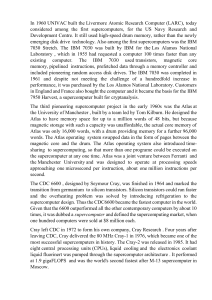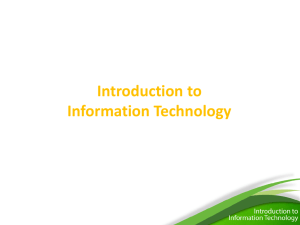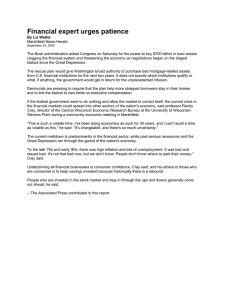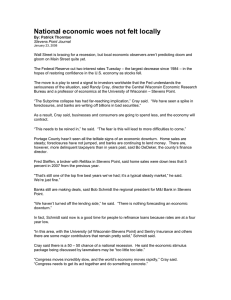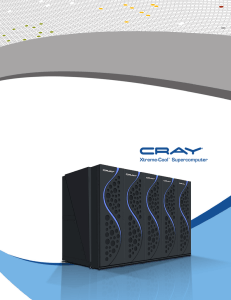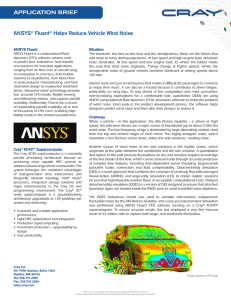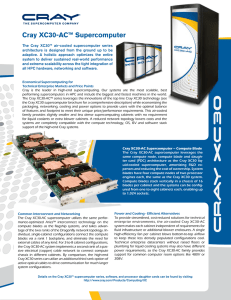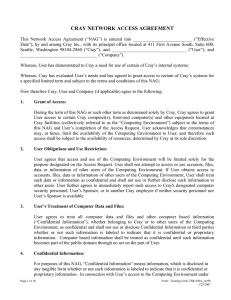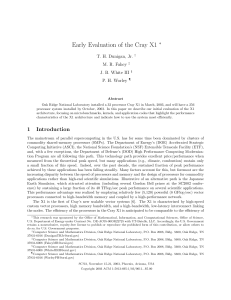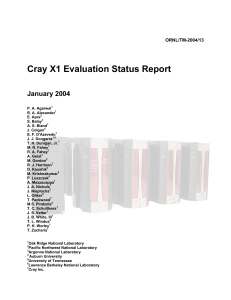SUPERCOMPUTERS PRIYADHARSHINI S
advertisement
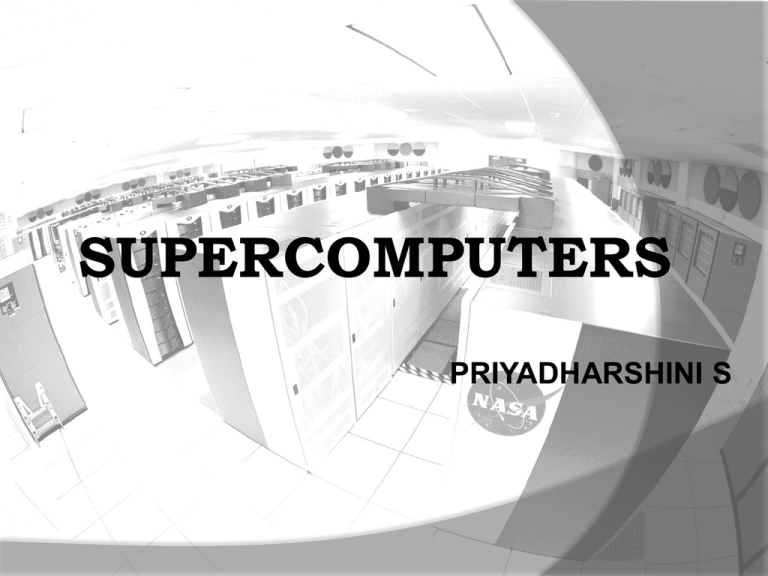
SUPERCOMPUTERS PRIYADHARSHINI S OVERVIEW The term is commonly applied to the fastest high-performance systems in existence at the time of their construction Typically multi core Housed in large clean rooms with high air flow to permit cooling Used to solve problems that are too massive for standard computers HISTORY First supercomputer built by Seymour Cray in Control Data Corporation (CDC) in 1957 CDC 1604 one of the first computers to replace vacuum tubes with transistors IBM responded with IBM 7030 (or Stretch) in 1961 In 1964, Cray’s CDC 6600 replaced Stretch as the fastest computer on earth with 3 million floatingpoint operations per second (FLOPS) The term supercomputer coined to describe CDC 6600 Cray-1 introduced in 1976, was the first successful implementation of vector processing (can operate on pairs of lists of numbers) Cray was also one of the pioneers of multiprocessing, implemented in Cray X-MP introduced in 1982 W. Daniel Hillis, a graduate student at MIT eliminated the single CPU in favor of decentralized controls in 1983 Hillis’s CM-1(Connection Machine), introduced in 1985 utilized 65,536 inexpensive one-bit processors, grouped 16 to a chip, to achieve several billion FLOPS Currently, there are supercomputers that exceed 1000 TFLOPS; the first having been built by IBM in 2008 FEATURES More than one CPU necessitated by physical limits of circuit technology Large storage capacity Very fast input/output capability Cryogenic fluids are used for cooling Price tag ranges from $500,000 to millions of dollars Linux and Unix are the most commonly used operating systems Fortran is the language most preferred for scientific programming ARCHITECTURE Most supercomputers are clusters of MIMD multiprocessors, each processor of which is SIMD A SIMD processor executes the same instruction on more than one set of data at the same time MIMD is employed to achieve parallelism, by using a number of processors that function asynchronously and independently APPLICATIONS Supercomputers are used to perform the most compute-intensive tasks of modern times fluid dynamics weather patterns seismic activity prediction nuclear explosion dynamics human genome sequencing credit card transaction processing design and testing of modern aircraft molecular modeling cryptology First computer to defeat a world champion!! Garry Kasparov Deep Blue In February 1996, IBM’s Deep Blue defeated grandmaster Garry Kasparov. It was then assigned to predict the weather in Atlanta, Georgia, during the 1996 Summer Olympic Games MANUFACTURERS IBM Aspen Systems SGI Cray Research Compaq Hewlett-Packard Thinking Machines Cray Computer Corporation Control Data Corporation Cray-1 IBM Roadrunner REFERENCES http://www.infoweblinks.com/content/supercomputers.htm http://en.wikipedia.org/wiki/Supercomputer http://www.britannica.com http://www.cisl.ucar.edu/computers/gallery/index.jsp
